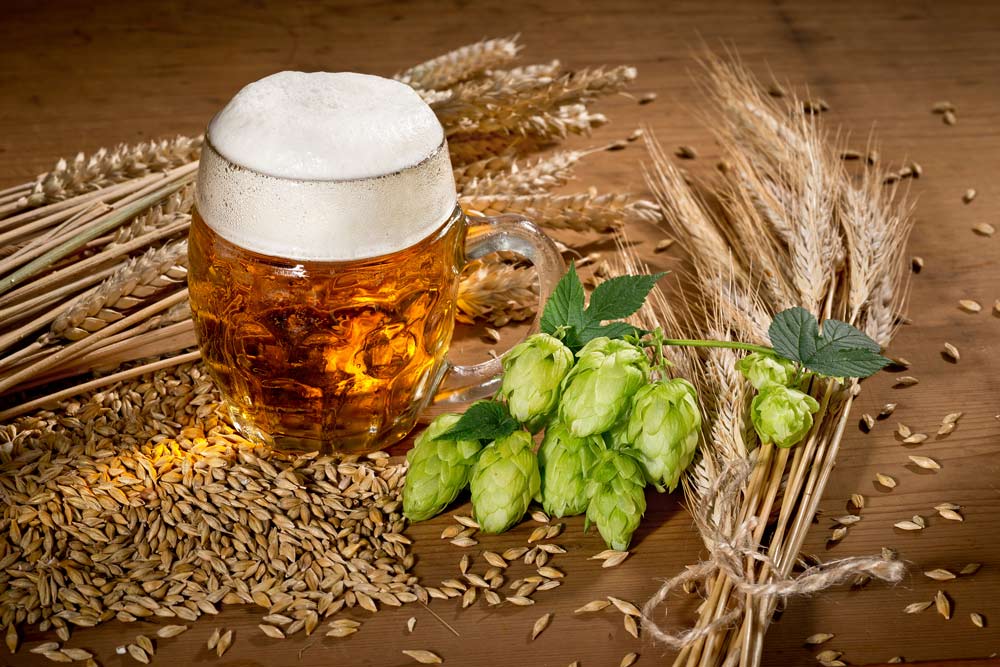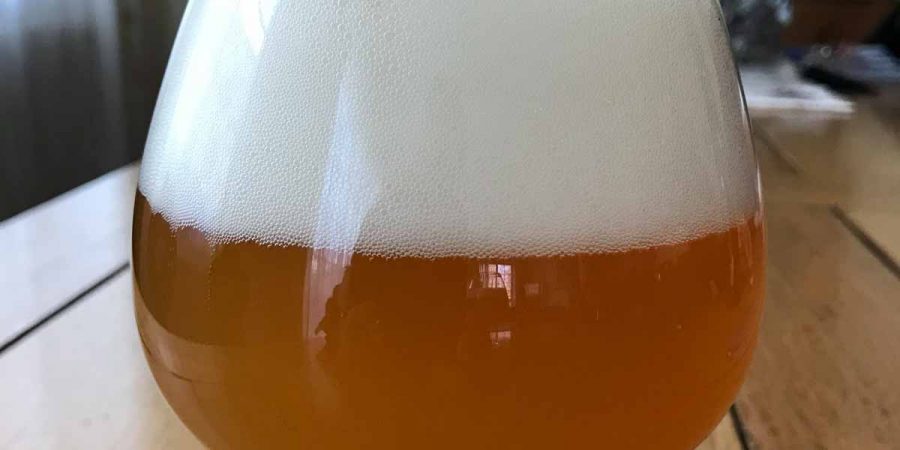

In most people‘s minds, beer and Germany go hand in hand. According to the Federal Statistical Office, there were 1,492 breweries in Germany in 2017. Roughly half are in Bavaria, while Baden- Württemberg and North Rhine-Westphalia are each home to over 100.
(German Statistical Office)
The monasteries brewed their own beer in the Middle Ages, evidence of which still remains today in the names of brands such as Franziskaner and Kloster Andechs (Andechs Abbey).
Reinheitsgebot – the German Purity Law
Despite the bewildering variety of beers on offer, virtually all conform to the Reinheitsgebot, the famous German purity law. This has been in force for around 500 years and strictly regulates the ingredients used to make to beer. Put simply, it decrees that only hops, malt and water are allowed in beer and prohibits the use of any additives. The first such law was passed in 1434 in Weissensee in Thuringia. Nationwide extension followed with the beer taxation act of 1906. Today, beers brewed in accordance with the Reinheitsgebot are protected by EU law as traditional foods.
Calories and Beer
Despite widely-held prejudices, beer is not more fattening than wine: the average litre of beer contains 400 to 500 calories, a figure that drops significantly in the modern light varieties. Good news for people who are conscious about their weight.
Microbrewery
Microbrewery puts Rickling on the map Rickling in northern Germany is home to one of Germany‘s smallest microbreweries: Ricklinger Landbrauerei. The privately run operation offers a wide selection of beers and is great place to stop for a bite to eat. Head brewer Udo Lämmer and his wife Kerstin are both passionate about beer. Their mouth-watering selection includes pilsners, dark beers, stout, the Märzen (a copper-red lager), May and Christmas bocks, porters and even beers made using smoked malt. All are untreated, unfiltered and naturally cloudy beers of the very highest quality. You can even go on one of the group beer-brewing courses, bookable throughout the week and at weekends.
Four of Germany‘s best-known beer types
Pilsner
Pilsner is the most popular beer in Germany and is drunk all over the country. Although – as the name suggests – it originates from Plzen, in what is now the Czech Republic, research by the German Breweries Association indicates it was invented by a German, Josef Groll from Vilshofen. He brought his father‘s recipe with him to Bohemia, where he produced the world‘s first pilsner in the Bürgerliches Brauhaus.
Altbier
Altbier literally means old beer and refers to its age-old brewing method. No evening in Düsseldorf in complete without a tankard of this fully fermented, bronze colored beer. On average, it is brewed to an original gravity of 11.5 per cent with a strength of approx. 4.8 per cent alcohol by volume.
Editor’s note: Once you get your glass order the next one right away — otherwise you’ll experience a dry period because glasses are small.
Kölsch
Kölsch, the signature beer of Cologne, is traditionally served in ‘Stangen’, long thin glasses that hold only 0.2 litres. Kölsch is a protected designation in the EU, which means that it can only be made by Cologne-based breweries or those authorised by the city‘s brewery association.
Weizenbier (Wheat beer)
Weizenbier translates as wheat beer. 80 percent of these beers are from Bavaria, but their popularity has spread to the very north of Germany. They have a distinct, fruity taste and are known for their foamy heads. Connoisseurs can choose between a light or dark Hefeweizen, which is unfiltered and therefore naturally cloudy, and the Kristallweizen that looks and tastes more like a lager.
The best-selling beers in Germany (trade figures)
- 1. Beck´s
- 2. Krombacher
- 3. Bitburger
- 4. Warsteiner
- 5. Paulaner
- 6. Veltins
- 7. Radeberger
- 8. Erdinger
- 9. Franziskaner
- 10. Jever
More about German Beer
Read all our articles tagged with: German Beer
Learn about Beer Halls, Oktoberfest, Beer Gardens and more.
Website references (statistics):
German Statistical Office: www.destatis.de/EN/

